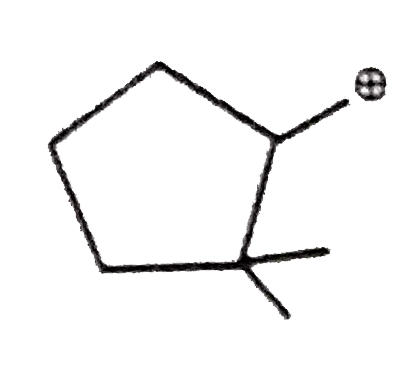Rearrangement of Carbocations
Step by step video & image solution for Rearrangement of Carbocations by Chemistry experts to help you in doubts & scoring excellent marks in Class 12 exams.
Updated on:21/07/2023Topper's Solved these Questions
Similar Questions
Knowledge Check
Under common reaction conditions, a carbocation rearranges to another carbocation of equal or greater stability. For example, a secondary carbocation will rearrange to a tertiary carbocation. It will not rearrange to a less stable primary carbocation. This generalization is not absolute, and because there is not a high energy barrier to the rearrangement of carbocations, rearrangement to a less stable cation can occur if it offers the chance to form a more stable product.
In which of the following cations rearrangement takes place?A B
B C
C D
D
Under common reaction conditions, a carbocation rearranges to another carbocation of equal or greater stability. For example, a secondary carbocation will rearrange to a tertiary carbocation. It will not rearrange to a less stable primary carbocation. This generalization is not absolute, and because there is not a high energy barrier to the rearrangement of carbocations, rearrangement to a less stable cation can occur if it offers the chance to form a more stable product.
In which of the following cations rearrangement takes place most rapidly?A BCH3−H∣C∣CH3−⊕CH2C
BCH3−H∣C∣CH3−⊕CH2C D
D
Under common reaction conditions, a carbocation rearranges to another carbocation of equal or greater stability. For example, a secondary carbocation will rearrange to a tertiary carbocation. It will not rearrange to a less stable primary carbocation. This generalization is not absolute, and because there is not a high energy barrier to the rearrangement of carbocations, rearrangement to a less stable cation can occur if it offers the chance to form a more stable product.
In the following cation, H/CH3 that is most likely to migrate to the positively charged carbon is :
H3C1−H∣2C∣OH−⊕3C∣H−H∣4C∣CH3−5CH3ACH3 at C−4BH at C-4CCH3 at C-4DH at C-2
Rearrangement reactions are shown by :
View SolutionWhenever an intermediate carbocation is formed in reaction it may rearranges.
Only those carbocation will rearrange which can produce more stable species . It can be done either by :
(i) Shifting of H, alkyl , aryl, bond (1,2-shifting )
(ii) Ring expansion
(iii) Ring contraction
Most stable rearranged carbocation is is
is
View SolutionStatement-1: Carbocationic rearrangement is known as electrophilic rearrangement
and
Statement-2: Carbocations are stabilized by both hyperconjugation and +I effect.
View SolutionRearrangement of genes occurs due to
View SolutionThe following transfonnation involves a carbocation rearrangement. The carbocation is generated by protonation of the hydroxyl group, followed by the loss of water. Which bond has to migrate in the carbocation to yield the product indicated (after the deprotonation)

View Solution


 Product is isopropyl benzene
Product is isopropyl benzene